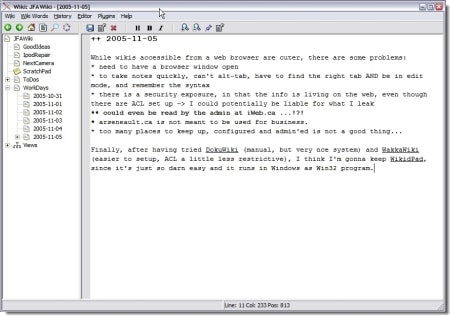Applying Business Process Management Techniques
Improving efficiency has always been something I’m interested in. From doing the dishes in 3 minutes flat to building a compound business document with incredibly tight deadlines, I always strive to maximize my productivity by improving the processes which support these activities.
It should be no surprise that I am also constantly on the lookout to improve the business processes in my IBM department. Whether for trivial details or for more complex processes, I always believe that we can do better. I’m a firm believer that if you need to repeat the same task a few times, then it’s worth automating. And because I’m of a curious nature and a hands-on kind of guy, I won’t just suggest and wait patiently in my corner – I’ll get working in my spare time and try to make it happen.
Exhibit #1: Managing Sales Opportunities
Since I’m in Technical Sales, one of my duty is to help nurture sales opportunities in which I’m engaged. This means I will provide solution design expertise, and make sure the solutions we work on are complete and functional. Of course, my management will sometimes ask what I’m working on. And since my work input is split up between Siebel CRM and Lotus Notes, it becomes difficult to get the single view of where I am.
The solution? I’ve designed my own Domino application where I input my work and keep a record of the accounts I’ve touched where I made significant contributions. The benefit? At the click of a button, I can see all my important contributions, and cross-reference them with our CRM tool. I look good to management as I can reply to ad-hoc queries, and I have a nicely formatted record of activity which will prove useful when I go for professional certification within IBM.
Exhibit #2: Managing small projects
In Techline, all of us are engaged in one or more small projects. These are typically meant to improve the way we do business with our internal and external clients. Projects such as the Remote Demo Team, the Teaming Workgroup and so on. But comes a point where you’ll be involved into 2, 3, 4 projects and all of a sudden, your memory just insn’t enough to track all the todos, deadlines, deliverables, etc.
The solution? I’ve re-possessed an old TeamRoom (Domino application) that wasn’t in use anymore on our server, I’ve re-purposed it and configured it so it could support multiple projects. The benefit? The application can now act as the sole communication vehicle for all project-related activity. Keeping minutes, assigning and tracking take-aways and providing shared documents for collaborative editing are all capabilities we now have, thanks to this database.
Exhibit #3: Managing incoming RFP requests
One thing our dept does very well and which is of great value to our sales communities is our ability to respond to RFPs for any IBM Software and/or Hardware combination. Typically, responding to an RFP is an effort that will spand many days, sometime weeks. And when it rains, it pours. So I will sometime (I’m a coordinator) manage multiple RFPs at the same time, with each one having different requesters, deadlines and requirements. The solution? Yes, another Domino application, called RFPtrack.
This application will let me keep a record of some basic information on each RFP, its status as well as next steps. The benefit? I can see at a glance which RFPs we’re working on, what stage they’re at and the revenue associated with each. The latter is useful because, well, sometimes, you have to prioritize, and revenue is one indicator we use to determine priorities when our resources are limited. So while I’m a big fan of Business Process Management (BPM), I’m an even bigger fan of applying the knowledge to make a difference in how I approach work.


